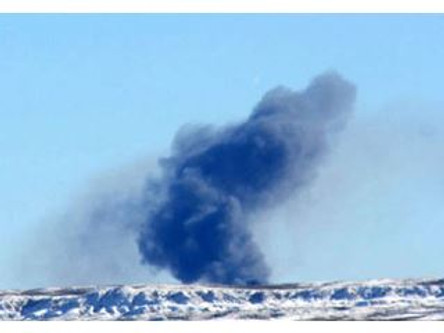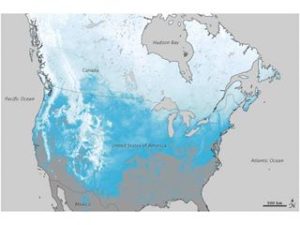The Danger of Cold Weather and Gas Detection
By Matt Murdock, COO at Wind River Investments and Alert Plus, LLC
Across the northern regions the leaves have changed color and fallen from the trees, the sound of chainsaws fills the forests as people gather firewood for the coming winter, and homeowners have begun winterizing their houses as temperatures drop.
Mean winter temperatures in much of North America will go well below 0F this year, but what can be done for the average natural gas employee whose sole source of gas detection is a portable gas detector whose lower operating temperature is -4F? How can gas leaks and air quality be known in weather conditions well below the operational rating of their equipment? This very problem struck our community only last year.
On the morning of November 22, 2013, 5 natural gas employees in Wyoming went to work as usual. At 10:15 a.. they began to weld repairs on a condensate tank, the resulting explosion hospitalized 4 of the 5 men and the fire was not put out until 1 p.m. (Casper Star Tribune, Nov. 22, 2014). The cause? Despite practicing normal safety procedures, the welding ignited ambient natural gas in and around the tank. The obvious question is why would anyone in their right mind begin welding when gas levels were so high? The answer is simply nobody - unless they didn’t know the gas levels were so high. On that day at approximately that time, the weather services recorded temperatures at -6F and wind speeds at 4.6mph bringing the wind chill down to -13F or even lower out on the Mesa. This is 9F below the rating of their handheld gas sniffer. This story, minus the explosion, is lived out day in day out throughout natural gas fields across North America and Europe 6-8 months a year.
In a post entitled “ Baby it's cold outside...” an Industrial Scientific writer advises his readers about using gas detection in cold weather. “The low temperature rating for continuous operation of most Industrial Scientific portable instruments is -20 degrees Celsius. However, they may be used at lower temperatures for intermittent periods... The response of the instrument will get sluggish at temperatures below -20C... The display may get dim and even go blank if it freezes... Battery run time will be reduced at low temperatures. Below -20C expect at least a 30- 40 percent reduction in run time... A good rule of thumb for using your gas detector in cold temperatures is that your gas monitor can generally stand to be out and working in the cold as long as you can. If it’s too cold for you, it’s probably too cold for the instrument as well.” Two things should be noted at this point: 1) -20C is only -4F and in cold regions that’s considered a balmy day, 2) while many natural gas employees must regularly work in temperatures below what is comfortable to them, production equipment does not have the luxury of jumping into the cab of a truck to warm up for 5-minutes before going back to work.
Recent Posts
-
Promoting Safety: National Work Zone Awareness Week is April 15-19, 2024
Each year, the National Work Zone Awareness Week (NWZAW) places the spotlight on the importance o …Apr 11th 2024 -
Understanding 4 Gas Monitors: How They Work & Why They Are Important
In today’s increasingly dynamic industrial landscape, 4 gas monitors have emerged as critical com …Apr 8th 2024 -
April Showers Require Workers to Wear Hi-Vis Safety Rain Gear
While April showers bring May flowers, they also bring challenges, particularly for those working …Apr 1st 2024






